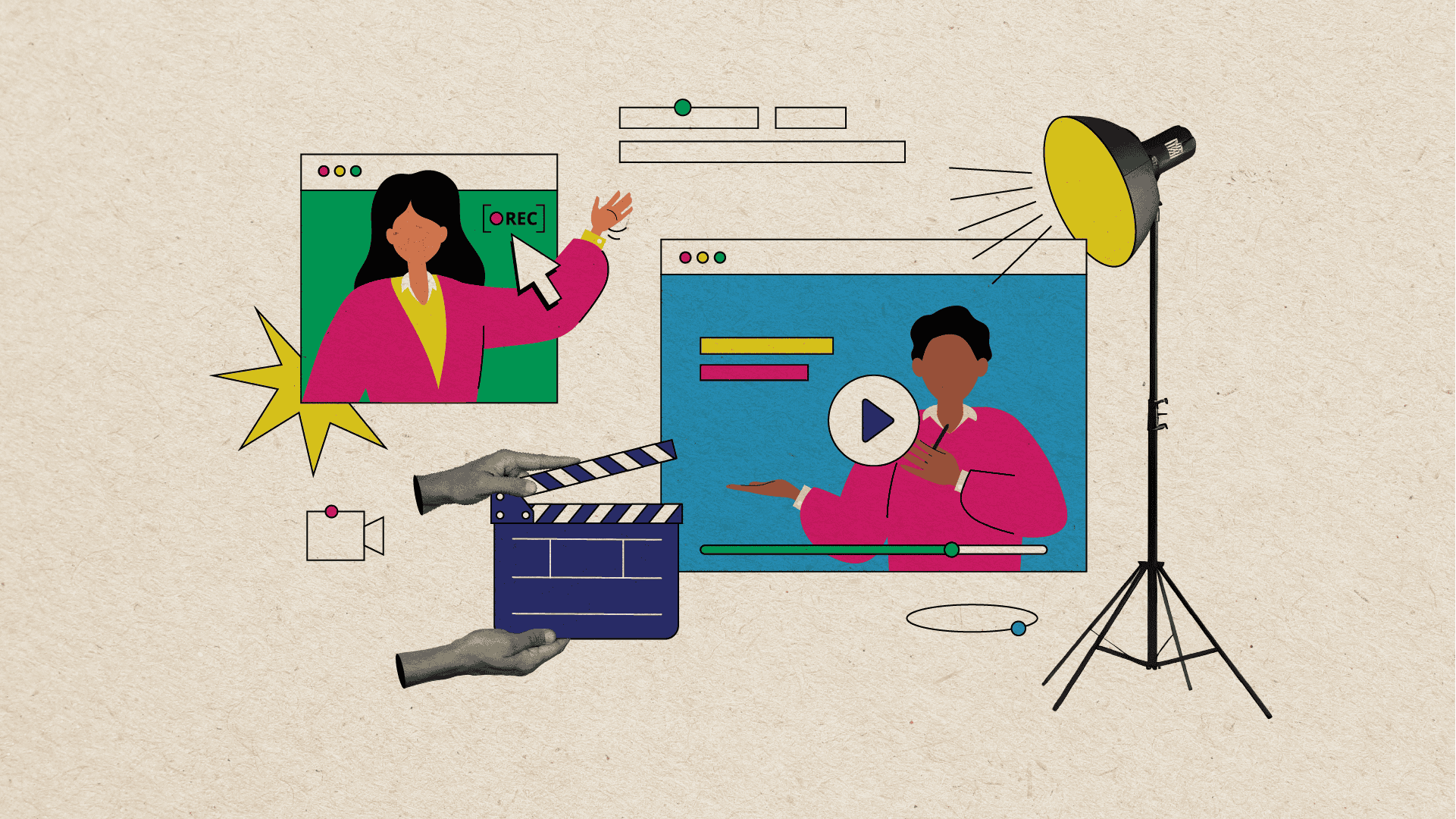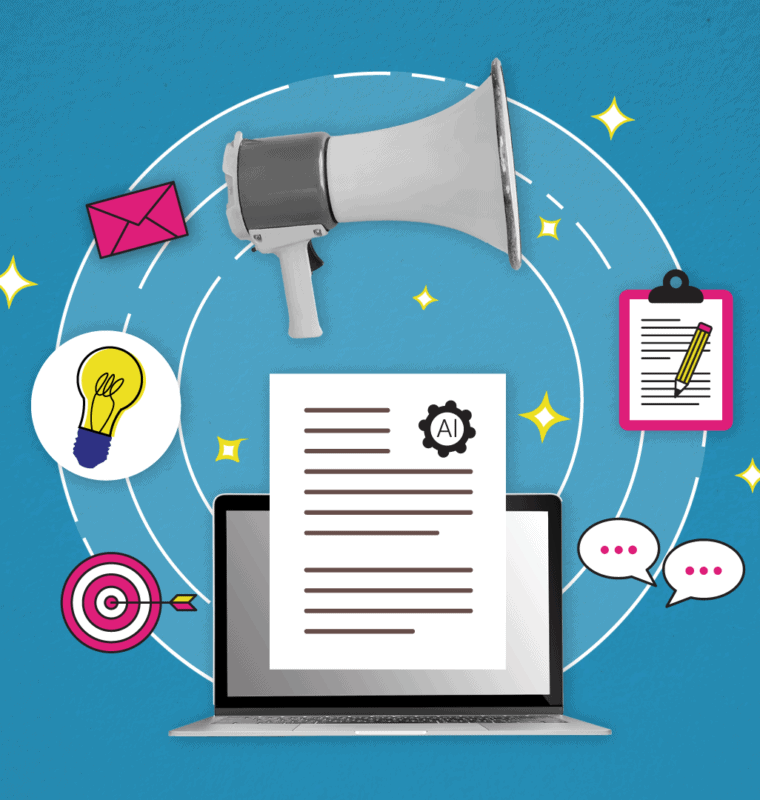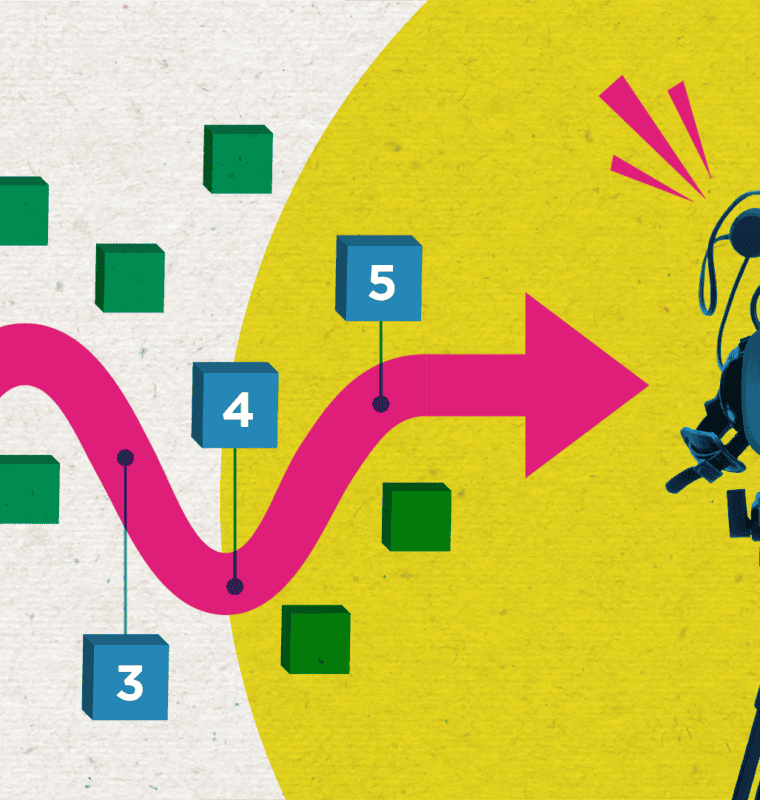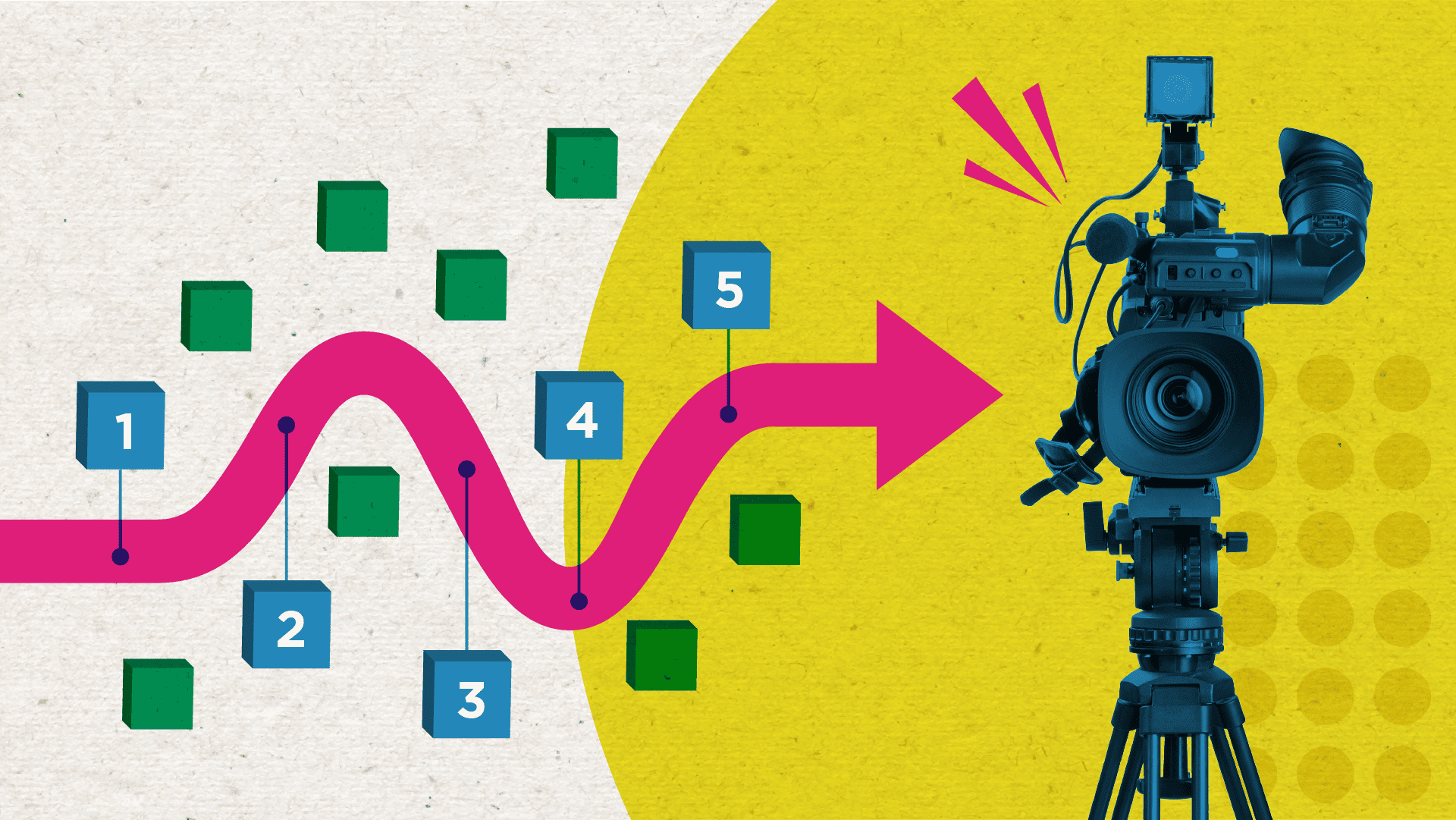
Image by Julianne Medenblik
Okay, okay, we get it: You don’t want to add to your already growing list of to-dos before your big event. But, this will really make you look like a marketing rock star—and it just requires a little coordination up front for a big payoff in the end.
Let’s say you’re knee-deep in planning mode for your marquee event and you’ve got a few customers lined up to speak during different sessions. Or, you’ve invited a few big-name customers who are psyched about attending. Great! Since they’re already making the trip out there to participate, you should also shoot a quick on-site customer testimonial where they say amazing things about your product. But wait—there’s more! That video is a goldmine for social posts and you can use the transcripts to create written case studies.
We’ve done it before and can confidently say this approach offers 100% satisfaction guaranteed. If you’re ready to pull this off, here are some tips from our video experts to keep in mind.
Book a conference room or carve out space in the main venue. There are usually rooms available at large conference centers that you can reserve ahead of time for your production studio. Our video team travels light and can set up wherever and whenever you need us. And if a room isn’t available, shooting on the event floor provides an engaging backdrop, even if it does pose a few audio challenges. Just be sure to coordinate with the conference center to find a space that works.
Prep the customer(s) so they can schedule time and review talking points. Once your customers are confirmed for the event, ask them if they can carve out 90 minutes to do a quick testimonial shoot. Chances are your large event attracts multiple big-name customers, so plan on doing a few interviews to maximize your time with the film crew. After you schedule folks, be sure to send over talking points that outline what you’d like to capture.
Bring in a host for a lively conversation. One way to change up the testimonial format is to have a host or moderator share the spotlight with your customer. This can provide a conversational flow to the video and it takes the pressure off your customer to do a solo show.
Line up a content vendor (us 😉) to make derivative assets. Hooray! That’s a wrap on your videos—now it’s time to turn them into nurture assets following the event. We’ll help you transform the full-length interview into social cut-downs to keep the event buzz going. And we’ll also develop written case studies using the transcripts so you have an evergreen story for partner and/or customer sites.
Now you just have to ask yourself, what’s your next event and whose testimonial can you capture? Contact us to start planning today.












